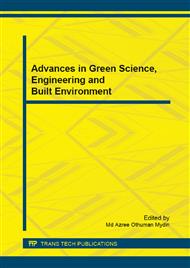p.157
p.161
p.165
p.168
p.172
p.176
p.180
p.184
p.188
Cross-Cultural Ethnic Identity in Urban Residential Area: An Epistemology
Abstract:
Aresidential landscape is one expression of the intrinsic and cognitive values of a relationship between humans and their environment. Experiential and phenomenological landscapes are established when people shape their living environment; in turn they are shaped and constructed by this living environment. Landscape alteration is one of the responses to the feelings of “outsideness” during the post-occupancy period. This paper will provide an understanding of the landscape alteration phenomenon in urban residential housing and the landscape values embodied by these altered landscapes.
Info:
Periodical:
Pages:
172-175
Citation:
Online since:
March 2015
Authors:
Keywords:
Price:
Сopyright:
© 2015 Trans Tech Publications Ltd. All Rights Reserved
Share:
Citation:


